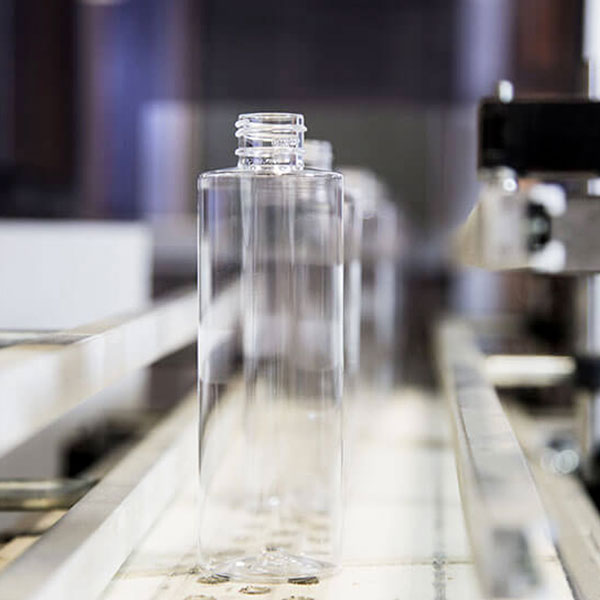The blowing process
21 October 2024
The blow-moulding process is a plastic processing technique used to create hollow objects, such as bottles and containers.
The following are the steps in the process of extrusion blow moulding in use with Plastivalle:
Extrusion of the parison: plastic (such as polyethylene or PVC) is melted and extruded into a "parison", a hollow tube made of molten plastic.
Mould insertion: the parison is inserted between two halves of an open mould. The mould is closed around the parison, blocking and forming the container neck immediately. Blowing: compressed air is blown into the parison, which expands and adapts to the inner shape of the mold. Cooling: the workpiece is left to cool inside the mould until it solidifies into the desired shape. Mold opening and workpiece extraction: the mold is opened and the shaped bottle is extracted.
Materials used
The most common plastic materials for blowing are high density polyethylene (HDPE), low density polyethylene (LDPE), polyethylene terephthalate (PET), PVC and polypropylene (PP).
Advantages of blow-moulding:
Production efficiency: Allows large quantities of bottles to be produced quickly.
Versatility: Can be used for bottles of various sizes and shapes.
Relatively low cost: Especially in the production of large batches.
In conclusion we can highlight the long production history of Plastivalle, the experience in the field of plastic containers developed in almost 60 years of activity.
The following are the steps in the process of extrusion blow moulding in use with Plastivalle:
Extrusion of the parison: plastic (such as polyethylene or PVC) is melted and extruded into a "parison", a hollow tube made of molten plastic.
Mould insertion: the parison is inserted between two halves of an open mould. The mould is closed around the parison, blocking and forming the container neck immediately. Blowing: compressed air is blown into the parison, which expands and adapts to the inner shape of the mold. Cooling: the workpiece is left to cool inside the mould until it solidifies into the desired shape. Mold opening and workpiece extraction: the mold is opened and the shaped bottle is extracted.
Materials used
The most common plastic materials for blowing are high density polyethylene (HDPE), low density polyethylene (LDPE), polyethylene terephthalate (PET), PVC and polypropylene (PP).
Advantages of blow-moulding:
Production efficiency: Allows large quantities of bottles to be produced quickly.
Versatility: Can be used for bottles of various sizes and shapes.
Relatively low cost: Especially in the production of large batches.
In conclusion we can highlight the long production history of Plastivalle, the experience in the field of plastic containers developed in almost 60 years of activity.
